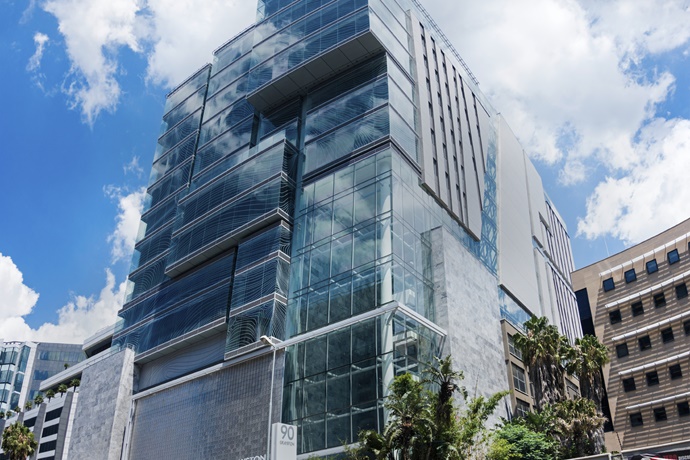Part One of this article series will provide a background and introduction to sustainable construction, including essential vocabulary that parties should consider before undertaking a green construction project. In Part Two, we will examine several pioneer cases in order to exemplify the legal ramifications when issues arise in the green construction context.
“Green" Certifications and Other Standards
While LEED is the most commonly cited and widely recognized green building certification program, several other programs exist, including BOMA 360, BREEAM, Energy Star, and Green Globes. Each program provides specific prerequisites and requirements designed to encourage environmentally friendly and energy efficient building and construction practices.LEED was created in 2000 by the United States Green Building Council (USGBC) which, despite the name, is not a government entity.3 There are four levels of LEED certification: “Certified,” “Silver,” “Gold,” and “Platinum.” Certifications are awarded based on the number of points a project receives under the LEED standards. LEED certification requirements are based on the project type (such as Homes or Neighborhood Development) and points are earned in credit categories that reflect industry concerns, such as water conservation, electricity management, and the use of sustainable material and certified green construction experts.
Currently, projects can register under LEED 2009 until October 31, 2016.4 After that date, new projects must register under LEED v4, which focuses on life cycle analysis (“an evaluation of the environmental effects of a product from cradle to grave”).5
Additionally, the International Code Council has codified green construction practices in the International green Construction Code (“IgCC”), the most recent version of which was released in June 2015.6 Rather than relying on owners to implement elective certification programs, when the provisions of IgCC or similar green construction codes are adopted by cities and states, governments impose minimum mandatory requirements on construction projects. To date, several major cities and states have enacted green construction legislation, including the adoption of the IgCC or other sustainable building codes or requirements.
What is a “Green” Building?
As a preliminary matter, it is important to define “green” and “sustainable” within the context of each project. These terms are oftentimes used to describe building and construction practices that are environmentally friendly and/or energy efficient. These terms are used colloquially to refer to the recent trend of using, for example, sustainable materials, environmentally friendly construction practices, and innovative energy efficient building features.Whether one is a lawyer, underwriter, owner, design professional, contractor, subcontractor, or consultant, from a practitioner and professional standpoint, one of the most important items in the contract documents for this type of project is oftentimes the contract clauses that define “green,” “sustainable,” and other essential vocabulary terms with respect to the specific project.
"Green" Construction Contracts - Other Terms
In addition to defining “sustainable” or “green,” carefully crafted contract documents for a sustainable construction project will define additional vocabulary terms such as “sustainable objective,” “sustainability plan,” “sustainability documentation,” “sustainability certification,” and “sustainability measure” as indicated in the American Institute of Architects (“AIA”) Sustainable Project (“SP”) model contract documents. The following definitions are simplified versions of the definitions defined and incorporated throughout the AIA SP contract documents.
- Sustainable Objective: the owner’s goal of incorporating Sustainable Measures throughout the project to benefit the environment and occupants
- Sustainability Plan: an overview of the project’s Sustainable Measures that assigns a responsible party to each and describes the strategies and evaluation metrics for each
- Sustainability Documentation: the documents required to obtain the Sustainable Objective
- Sustainability Certification: the initial third-party certification (e.g. LEED) that is designated as part of the Sustainable Objective
- Sustainability Measure: specific design or construction element or requirement that must be achieved to satisfy the Sustainable Objective
As will be discussed further in Part Two of this article series, careful consideration in defining these contract terms is oftentimes of critical importance when the project fails to obtain certification or perform as expected. Additionally, Part Two of this article series will identify certain risks that owners, general contractors, subcontractors, and other construction professionals should be aware of before undertaking a “green” construction project.
ABOUT THE AUTHOR
Richard Glucksman is a founding partner of Chapman, Glucksman, Dean, Roeb & Barger which has offices throughout California. Mr. Glucksman is an AV Preeminent Rated Lawyer with Martindale-Hubbell, which is the highest rating available. He has been named “Super Lawyer” for the last 8 years, including 2015. He is well known in the construction and business legal community for his representation of builders, developers and business clients. Mr. Glucksman specializes in complex multi-party litigation, including construction defect claims, environmental, commercial, business and catastrophic casualty litigation.
1 http://www.usgbc.org/articles/leed-certification-update-september-2015
2 http://www.usgbc.org/articles/leed-certification-update-september-2015; http://www.usgbc.org/articles/leed-certification-update-august-2015;
http://www.usgbc.org/articles/leed-certification-update-july-2015;
http://www.usgbc.org/articles/leed-certification-update-june-2015;
http://www.usgbc.org/articles/leed-certification-update-may-2015;
http://www.usgbc.org/articles/leed-certification-update-april-2015;
http://www.usgbc.org/articles/leed-certification-update-march-2015;
http://www.usgbc.org/articles/leed-certification-update-february-2015;
http://www.usgbc.org/articles/leed-certification-update-january-2015
3 http://www.usgbc.org/about/history
4 http://www.usgbc.org/articles/usgbc-announces-extension-leed-2009
5 http://www.usgbc.org/glossary/39#letterl
6 http://www.iccsafe.org/codes-tech-support/codes/2015-i-codes/igcc/


